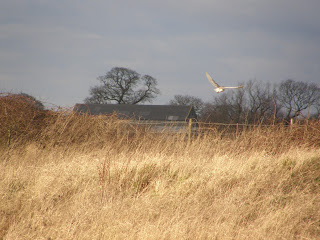Following the successful hard weather catching of recent weeks, numbers have now started to decrease as both the ice released its grip on the valley and melt water from the North York Moors caused birds to spread out around the valley and revert to natural food sources. Still, we can’t complain as it was good whilst it lasted and we certainly made the most of it.
However, February is typically the start of Shelduck ringing in the valley, and with Shelduck numbers starting to increase and now beginning to use some of the trapping areas it’s looking promising. Today saw the best catch of the year so far for the species with 9 new birds and four re-traps. It’s always nice to catch a mix of new birds and ‘old friends’ so it was really good to see GN81934 (black darvic FL) who was originally ringed in the same spot on 04/02/05, seven years and a week earlier!
The following photos were taken to explain how we’re ageing Shelduck. The bird in the photograph below is a 7 (which means it’s definitely two years old and so it hatched during 2010). Notice the white tips to the secondaries and some of the primaries, but otherwise it’s an adult looking wing. It’s possible that not all birds of this age can be confidently aged to this level.

The Shelduck in the photograph below is an example of a bird that might be a 7 (definitely hatched two years ago) because it’s still got white on the tips of the secondaries but no white on the primaries - and so it was aged as a 6 (hatched at least 2 years ago) as we can’t be sure it was hatched in 2010.
The bird below is a 6 (adult) there’s no grey on the coverts and no white tips to the secondaries and the wing is bright and colourful. Birds like this one may be 3+ years old (which would make it an 8), but again we’re not sure these could be recorded with confidence. There is still a lot to be learned about ageing waterfowl!
Until Shelduck are atleast two years old they can't be sexed, from then on it is based on knob size and shape/colour of the bill nail. Some adult males have large prominent knobs, the one in the photograph below is on the small size, and males have a well defined 'v' nail. Female birds show a blue coloured tip with a less defined nail, and they lack the knob of the males.
Male
Female
Whilst at North Duffield, Steve managed a couple of nice photographs of the local Barn Owls, they were out and about day flying this afternoon, enjoying the milder conditions and disappearing snow cover.
Before we went out this morning the net at the base was open for a few hours whilst we were doing hide repairs, a nice small catch of 14 birds, made up mainly of Greenfinch (8).
Greenfinch (juvenile male)









No comments:
Post a Comment